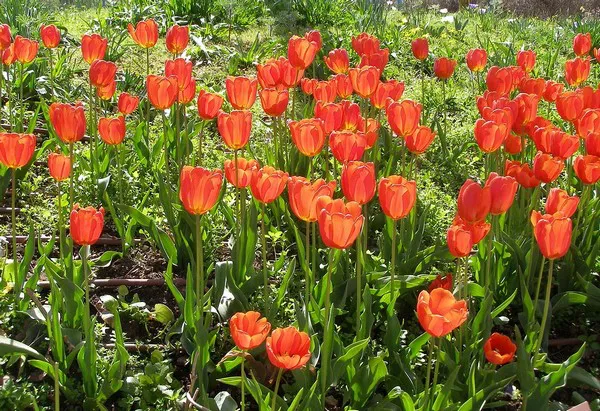Squirrels, those agile and curious rodents, are a common sight in urban parks, suburban gardens, and even wooded areas. While their antics and acrobatics often entertain onlookers, their dietary habits may not be as well understood. In this article, we delve into the intriguing question: What flowers do squirrels eat? Understanding the floral preferences of these furry creatures can provide valuable insights for gardeners, conservationists, and anyone interested in the delicate balance of nature.
The Eclectic Palate of Squirrels
Squirrels are omnivores, meaning they consume a diverse range of foods. Their diet typically includes nuts, seeds, fruits, fungi, and even the occasional insect. While flowers might not be the primary focus of their foraging activities, squirrels have been observed nibbling on various blooms. To better comprehend their floral choices, it’s essential to consider factors such as species, geographical location, and seasonal availability.
Common Flowers in the Squirrel Menu
Tulips (Tulipa spp.)
Tulips, known for their vibrant colors and elegant shapes, are not immune to the culinary curiosity of squirrels. These rodents have been observed munching on tulip bulbs, especially in spring when these flowers are in full bloom. Gardeners may need to take precautions to protect their tulip bulbs if squirrels are prevalent in their area.
Crocuses (Crocus spp.)
Crocuses, with their early spring blossoms, are another favorite of squirrels. The corms of these flowers are a delectable treat for these rodents. While crocuses add beauty to gardens, their appeal to squirrels might necessitate protective measures for gardeners aiming to preserve their blooms.
Sunflowers (Helianthus annuus)
Sunflowers, with their towering stalks and bright faces, are not just a visual delight but also attract the attention of squirrels. These rodents are known to enjoy sunflower seeds, and their foraging can sometimes lead them to the blooms as well. Gardeners cultivating sunflowers may find that squirrels are occasional visitors to their floral displays.
Daffodils (Narcissus spp.)
Daffodils, heralds of spring with their trumpet-shaped blossoms, are generally avoided by squirrels due to their toxicity. However, there have been reports of squirrels digging up daffodil bulbs, possibly mistaking them for edible treats. While not a common occurrence, it’s essential for gardeners to be aware of the potential risks to these rodents.
Marigolds (Tagetes spp.)
Known for their pest-repelling properties, marigolds are typically safe from squirrels. These colorful flowers add a vibrant touch to gardens and, fortunately, are not high on the list of squirrel delicacies. Gardeners seeking squirrel-resistant blooms might consider incorporating marigolds into their landscaping plans.
Factors Influencing Squirrel Foraging Behavior
Understanding the factors that influence squirrel foraging behavior can shed light on why these rodents might choose certain flowers over others.
Seasonal Availability
The availability of certain flowers varies throughout the year, influencing the choices squirrels make in their foraging activities. In spring, when many flowers bloom, squirrels may have a wider array of options, leading to diverse dietary preferences.
Geographical Location
Different species of squirrels inhabit various regions, and their floral choices can be influenced by the types of flowers native to those areas. Urban and suburban environments may also expose squirrels to non-native plants, affecting their foraging behavior.
Nutritional Needs
Squirrels, like any living organism, have nutritional requirements that influence their foraging behavior. While flowers may not be a primary source of nutrition, certain blooms may provide essential nutrients or serve as a supplement to their diet.
Predator Avoidance
Squirrels are not the only creatures foraging in gardens. The presence of predators, such as birds of prey or domestic pets, can influence where and when squirrels choose to forage. In some cases, squirrels may select flowers in more secluded or protected areas.
Mitigating Squirrel Impact on Gardens
For gardeners who appreciate the presence of squirrels but wish to protect their floral investments, there are several strategies to consider.
Protective Barriers
Physical barriers, such as wire mesh or chicken wire, can be employed to shield flower bulbs from the curious paws of squirrels. Placing these barriers around bulbs or creating raised beds can deter squirrels from accessing their favorite floral treats.
Natural Deterrents
Certain plants and substances are known to repel squirrels. Strategically planting deterrents like daffodils or using natural substances like cayenne pepper can discourage squirrels from exploring specific areas of the garden.
Squirrel-Proof Feeders
If squirrels are causing trouble in the garden, providing them with an alternative food source may redirect their attention. Squirrel-proof bird feeders can be filled with nuts or seeds, offering a more appealing option than delicate flower bulbs.
Adjusting Plant Selections
Opting for flowers that are less attractive to squirrels can also mitigate potential damage. Researching squirrel-resistant plant varieties and incorporating them into garden designs can help strike a balance between floral beauty and the local wildlife.
Conclusion
In the intricate tapestry of nature, squirrels play a unique role as foragers with eclectic tastes. While they may nibble on a variety of flowers, their preferences can be influenced by factors such as seasonal availability, geographical location, nutritional needs, and predator avoidance. Understanding the delicate balance between the flora and fauna in our surroundings allows gardeners and nature enthusiasts to coexist harmoniously with these charming rodents.


